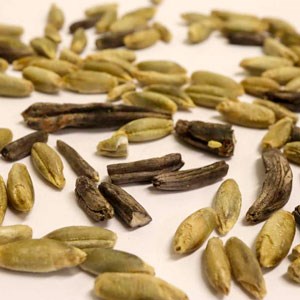Facts:
The project is financed by Lantmännen research foundation and is a collaboration between SLU and Agroväst.

Ergot, caused by the fungal plant pathogen Claviceps purpurea, is a disease with severe consequences in cereal production. The most problematic aspect is the production of toxic ergot alcaloids in affected plant tissue.
In Sweden, the concerns around ergot have increased recently, both because of increased occurrence of the disease and because of new stricter European regulations on maximum levels of fungal sclerotia and toxin content in cereal grain and products. At the same time, there are important knowledge gaps in basic information about factors of importance for disease development and toxin production, which limits the ability to develop reliable recommendations for how the disease can be prevented.
In a project financed by Lantmännen research foundation, we are studying potential risk factors for disease development. In 2022, rye and wheat crops in Sweden were severely affected by ergot. One part of our study is collecting information about this outbreak to summarise potential risk factors and what we can learn from the outbreak for future recommendations to farmers.
We are also studying how cultivar choice and rinsing seed lots from sclerotia affect the disease or mycotoxin content.
The project is financed by Lantmännen research foundation and is a collaboration between SLU and Agroväst.